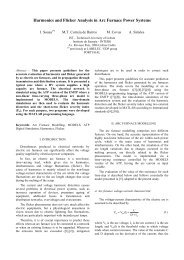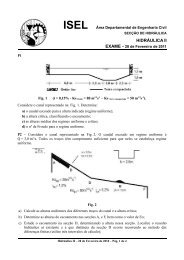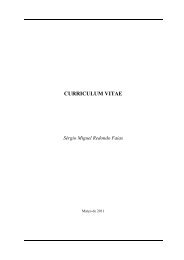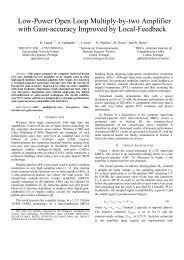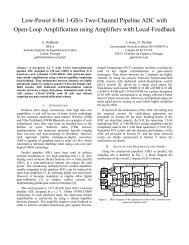Formal Verification of Workflow Patterns with SPIN
Formal Verification of Workflow Patterns with SPIN
Formal Verification of Workflow Patterns with SPIN
You also want an ePaper? Increase the reach of your titles
YUMPU automatically turns print PDFs into web optimized ePapers that Google loves.
4 CASE STUDIES 13inline cancelCase(qsCancel,sizeq,piIds,msgs,id){int i;i=0;do :: i qsCancel[i]!msgs[i];i++;:: i==sizeq ->break;:: else -> i++;od;}To implement this pattern, the process and all its activities and sub-processesmust include an escape sequence as follows.unless{ len(qsCancel[id])>0;cancelCase(qsCancel,sizeq,piIds,msgs,id) }Each process that receives a message from its canceling channel qsCancel[id],sends a canceling message, before terminate, to each one <strong>of</strong> its sub-processes oractivities in order to cancel them.4 Case StudiesIn order to ensure the reliability <strong>of</strong> business process, formal verication methodsare needed. This section shows how the above translation <strong>of</strong> workowpatterns can be useful for the formal verication <strong>of</strong> business process models.Two standard examples <strong>of</strong> business processes are the Loan Approval and theTravel Agency. In this section it will be illustrated how to apply the translationdescribed above to both business process examples and, subsequently, properties<strong>of</strong> these processes will be checked. It will be also illustrated how these businessprocesses can be modeled in Business Process Modeling Notation (BPMN) [4].4.1 Loan RequestThis case study consists <strong>of</strong> a simple loan approval where customers can submittheir requests for loans. A description <strong>of</strong> this process can also be found in [5].The loan process starts <strong>with</strong> the activity Loan Request. This activity isinitiated <strong>with</strong> a request made by a costumer for a loan. The costumer must llan application specifying personal information and the amount being requested.The activity Validate Application will check the request made in the previousactivity and will send the result to the next activity, Application Ok. Inthe activity Application Ok it may occur one <strong>of</strong> the three possible situations:the application is correct and is necessary to send that information to the nextactivity, Approve; the application must be checked again and it is necessaryto send a message to the activity Validate Application in order to revalidatethe application; the application is not correct and is necessary to send that informationto the next activity, Send Rejection. In the activity Approve thereceived information is processed and sent to the activity Approved?. Finally,in the activity Approved? there are three possible decisions: the loan requestcan be approved and thus it sends a message to notice the Send Approvalactivity; the loan request cannot be approved yet, but it is possible to approve








